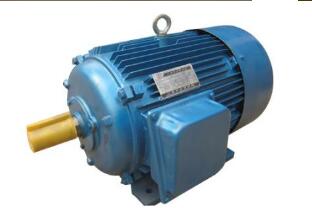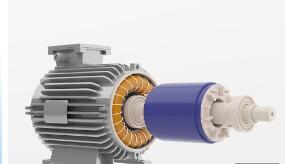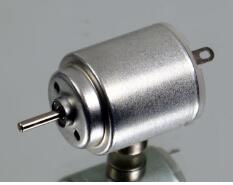This article first introduces the performance comparison of stepper motors and servo motors, secondly introduces the advantages of servo motors over stepper motors, and finally explains the selection principles of motors and how to properly select servo motors and stepper motors. Get to know.
What are servo and stepper motors?Servo motors are also called executive motors. They are used as actuators in automatic control systems to convert the received electrical signals into angular displacement or angular velocity output on the motor shaft. It is divided into two categories of DC and AC servo motors. Its main feature is that there is no rotation phenomenon when the signal voltage is zero, and the speed decreases with the increase of torque. The servo is mainly positioned by pulses. Basically, it can be understood that when the servo motor receives one pulse, it will rotate the angle corresponding to one pulse to achieve displacement. Because the servo motor itself has the function of sending pulses, the servo motor Rotating an angle will send out a corresponding number of pulses. In this way, the pulses received by the servo motor form a response, or a closed loop. In this way, the system will know how many pulses were sent to the servo motor and how many pulses were received In this way, the rotation of the motor can be controlled very accurately, thereby achieving precise positioning, which can reach 0.001mm.
The stepper motor is a device with discrete motion, which has an essential relationship with modern digital control technology. In the current domestic digital control system, stepper motors are widely used. With the emergence of all-digital AC servo systems, AC servo motors are also increasingly used in digital control systems. In order to adapt to the development trend of digital control, most of the motion control systems use stepper motors or all-digital AC servo motors as the execution motors. Although the two are similar in control method (pulse train and direction signal) flexible coupling, there is a big difference in performance and application. Now compare the performance of the two.

1. Different control accuracy
The step angle of two-phase hybrid stepper motor is generally 3.6 °, 1.8 °, and the step angle of five-phase hybrid stepper motor is generally 0.72 °, 0.36 °. There are also some high-performance stepper motors with smaller step angles. For example, a stepping motor for slow wire machine tool produced by Stone Company has a step angle of 0.09 °; the step angle of a three-phase hybrid stepper motor produced by BERGER LAHR can be passed The DIP switch is set to 1.8 °, 0.9 °, 0.72 °, 0.36 °, 0.18 °, 0.09 °, 0.072 °, 0.036 °, which is compatible with the step angle of two-phase and five-phase hybrid stepping motors.
The control accuracy of the AC servo motor is guaranteed by the rotary encoder at the rear end of the motor shaft. Taking Panasonic's all-digital AC servo motor as an example, for a motor with a standard 2500-line encoder, the pulse equivalent is 360 ° / 10000 = 0.036 ° due to the use of quadruple frequency technology inside the drive. For a motor with a 17-bit encoder, the motor rotates once every 217 = 131072 pulses received by the drive, that is, its pulse equivalent is 360 ° / 131072 = 9.89 seconds. It is 1/655 of the pulse equivalent of a stepper motor with a step angle of 1.8 °.
2. Different low frequency characteristics
Stepper motors are prone to low-frequency vibration at low speeds. The vibration frequency is related to the load and the performance of the drive. It is generally considered that the vibration frequency is half of the no-load starting frequency of the motor. This low-frequency vibration phenomenon determined by the working principle of the stepper motor is very unfavorable for the normal operation of the machine. When the stepper motor works at a low speed, damping technology should generally be used to overcome low-frequency vibration phenomena, such as adding a damper to the motor, or using a subdivision technology on the driver.
The AC servo motor runs very smoothly, and there will be no vibration even at low speeds. The AC servo system has a resonance suppression function, which can cover the lack of rigidity of the machine, and the system has a frequency analysis function (FFT), which can detect the resonance point of the machine to facilitate system adjustment.
3. Different moment frequency characteristics
The output torque of the stepper motor decreases with the increase of the speed, and will drop sharply at a higher speed, so its maximum working speed is generally 300 ~ 600RPM. The AC servo motor is a constant torque output, that is, it can output a rated torque within its rated speed (generally 2000RPM or 3000RPM), and a constant power output above the rated speed.
4. Different overload capacity
Stepper motors generally do not have overload capability. The AC servo motor has a strong overload capacity. Take the Panasonic AC servo system as an example, it has speed overload and torque overload capabilities. The maximum torque is three times the rated torque, which can be used to overcome the moment of inertia of the inertial load at the moment of starting. Because stepper motors do not have such an overload capability, in order to overcome this inertia moment when selecting a model, it is often necessary to select a motor with a larger torque, and the machine does not need that much torque during normal operation, and a torque appears. The phenomenon of waste.
V. Different running performance
The control of stepper motor is open loop control. If the starting frequency is too high or the load is too large, the phenomenon of lost steps or blocked rotation may occur. When the speed is stopped, the phenomenon of overshoot is easy to occur. Therefore, in order to ensure its control accuracy, it should be handled properly. Increase and decrease speed. The AC servo drive system is closed-loop control. The drive can directly sample the feedback signal of the motor encoder. The internal position and speed loops are formed. Generally, the stepping motor will not lose steps or overshoot, and the control performance is more reliable. Sixth, the speed response performance is different
It takes 200 to 400 milliseconds for the stepper motor to accelerate from standstill to working speed (generally several hundred revolutions per minute). The AC servo system has good acceleration performance. Taking the Panasonic MSMA 400W AC servo motor as an example, it only takes a few milliseconds to accelerate from standstill to its rated speed of 3000 RPM. It can be used in control occasions that require rapid start and stop.
7. Different prices
Due to the relatively high manufacturing cost and technical content of the servo motor and its driver, the price is also much higher than that of the stepper motor, especially the price gap of the servo motor as soon as possible. This year, domestic servo motors have developed rapidly. There are many types and models of servo motors to choose from, and the cost performance is also high.
In summary, the AC servo system is superior to stepper motors in many performance aspects. However, stepper motors are often used as executive motors in less demanding occasions. Therefore, in the design process of the control system, it is necessary to comprehensively consider factors such as control requirements and costs, and select an appropriate control motor.

1. Accuracy: Achieve closed-loop control of position, speed and torque; overcome the problem of stepping motor out of step;
2. Speed: good high-speed performance, generally rated speed can reach 2000 ~ 3000 rpm;
3. Adaptability: strong anti-overload capability, can withstand a load three times the rated torque, especially suitable for occasions with momentary load fluctuations and quick start requirements;
4. Stability: The low-speed operation is stable, and the low-speed operation will not produce a stepping phenomenon similar to a stepper motor. Suitable for occasions with high-speed response requirements;
5. Timeliness: the dynamic response time of motor acceleration and deceleration is short, generally within tens of milliseconds;
6. Comfort: fever and noise are significantly reduced.
Selection principle of motor1. Consider the traditional motor <stepper motor <servo motor from cost
2. Considering the motor speed requirements, the traditional motor speed range is wide, but the speed adjustment is inaccurate and not smooth, and the power will decrease as the speed is reduced, and the resulting torque is reduced; the stepper motor has more stringent requirements on the speed, the speed When it is too low, there will be jitter and creeping phenomenon, and the torque will be greatly reduced when the speed is high, so the stepper motor is only suitable for medium speed operation. The advantages of the servo motor in speed are obvious, and there are basically no obvious weaknesses.
3. Considering the control accuracy, the traditional motor is an analog control, so the accuracy cannot be guaranteed. The accuracy of the stepper motor and servo motor is digital signal control, which is much higher than that of the traditional motor, but the servo motor has an encoder to achieve internal closed-loop control. The step-reduction is reduced, and the step angle of the servo motor is usually much smaller than that of the stepper motor, so the accuracy is higher.

Mainly depends on the specific application, simply say to determine: the nature of the load (such as horizontal or vertical load, etc.), torque, inertia, speed, accuracy, acceleration and deceleration, etc., the host control requirements (such as port interface and communication Requirements), the main control mode is position, torque or speed mode. Whether the power supply is DC or AC power supply, or battery power supply, voltage range. Based on this, determine the model of the motor and the matching drive or controller.
72V20Ah Lithium Ion Battery,Electric Scooter Lifepo4 Battery Pack,Lithium Battery For Electric Motorcycle,Lithium Battery For Electric Bike
Jiangsu Zhitai New Energy Technology Co.,Ltd , https://www.jszhitaienergy.com